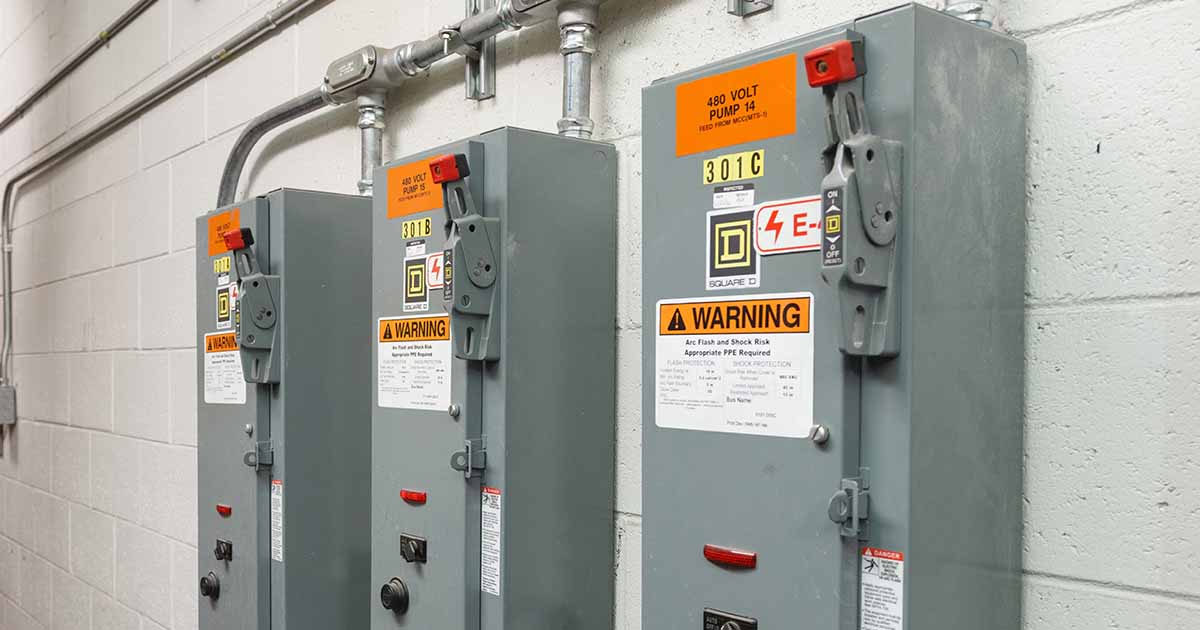How to Check Your Electrical Panel at Home

Ensuring that your home’s electrical system is functioning properly is crucial for safety and efficiency. One of the key components of your electrical system is the electrical panel, which distributes power to different parts of your house. Over time, your electrical panel might require attention, either to fix issues or to ensure that it’s functioning as it should. In this article, we’ll guide you through the steps on how to check your electrical panel at home. This easy-to-understand guide will help you spot potential problems and know when it’s time to call a professional.
1. Understanding Your Electrical Panel
Before you start checking your electrical panel, it’s important to understand what it does. The electrical panel, also known as the breaker box or fuse box, is the heart of your home’s electrical system. It receives power from the utility company and distributes it to different circuits in your home. The panel contains circuit breakers, which are switches that control the flow of electricity to specific areas of your house. If there is an overload or short circuit, the breaker will “trip” to stop the flow of electricity and prevent a fire or damage to your appliances.
2. Safety First
Before you open the electrical panel or start checking any components, safety should be your top priority. Working with electricity can be dangerous if proper precautions are not taken. Always make sure that your hands are dry and avoid standing in water when inspecting the electrical panel. If you’re unsure about any aspect of your electrical system, it’s always best to contact a licensed electrician to handle the job. If you decide to proceed with checking the panel yourself, make sure the main power supply is turned off to prevent electrical shock.
3. Locate Your Electrical Panel
The first step in checking your electrical panel is to find its location. In most homes, the electrical panel is located in basements, garages, or utility rooms. In some cases, it may be found in closets or hallways. It’s typically a metal box with a door that opens to reveal the circuit breakers. If you’re unsure where your electrical panel is located, check your home’s blueprints or ask a professional electrician for guidance.
4. Inspect the Exterior of the Panel
Once you’ve located your electrical panel, start by inspecting its exterior. The panel should be securely mounted on the wall, with no signs of damage or corrosion. Look for any loose or missing screws on the panel door or any exposed wiring. If you see any damage, it’s important to address it as soon as possible. A damaged panel can be a fire hazard and needs immediate attention from a professional.
5. Check the Circuit Breakers
Next, open the panel door to inspect the circuit breakers. These breakers should be clearly labeled, indicating which areas or appliances they control. For example, you may see labels such as “Living Room,” “Kitchen,” or “Water Heater.” If any of the breakers are tripped (the switch will be in the “off” position), it’s important to reset them. Simply flip the breaker back to the “on” position.
However, if the breaker trips again after resetting, it could indicate a problem with that circuit, such as an overloaded circuit, a short circuit, or faulty wiring. In such cases, it’s best to consult an electrician to diagnose and fix the issue.
6. Look for Overloaded Circuits
An overloaded circuit is one of the most common issues with electrical panels. This occurs when too many devices or appliances are plugged into one circuit, drawing more power than the circuit can handle. Overloaded circuits often cause breakers to trip frequently. To check for overloaded circuits, look at the appliances and devices connected to each circuit. If one circuit is powering several high-energy appliances, such as air conditioners, microwaves, or space heaters, it could be overloading the system.
To prevent overloads, try redistributing your devices to different circuits. If you consistently experience tripped breakers, it might be necessary to upgrade your electrical panel or add additional circuits to accommodate your power needs.
7. Examine the Wiring
The wiring inside the electrical panel is responsible for carrying electricity to various parts of your home. Over time, the wiring can become worn, frayed, or loose, leading to electrical hazards. Carefully inspect the wiring in your panel to ensure that it is secure and free of damage. If you notice any signs of wear or if wires appear loose, it’s crucial to have a licensed electrician address the issue immediately. Damaged wiring can cause electrical fires and pose serious safety risks.
8. Test GFCI Outlets
Ground Fault Circuit Interrupter (GFCI) outlets are designed to protect you from electrical shock, especially in areas where water is present, such as kitchens, bathrooms, and outdoor spaces. These outlets are connected to a breaker in your electrical panel. To check if the GFCI outlets are working properly, press the “test” button on each outlet, and then press the “reset” button. If the outlets don’t reset or if they trip frequently, there may be an issue with the breaker controlling them.
9. Check for Strange Sounds or Smells
While inspecting your electrical panel, listen for any unusual sounds, such as buzzing, crackling, or humming. These sounds can indicate an electrical problem, such as a loose connection or an overloaded circuit. If you smell burning, it could be a sign of a serious issue, such as overheating or damaged wiring. In either case, turn off the power immediately and contact a professional electrician to inspect the panel.
10. Monitor the Age of Your Electrical Panel
The age of your electrical panel plays a significant role in its performance. Most electrical panels have a lifespan of about 25 to 40 years. If your panel is older than that, it may not be able to handle the electrical load of modern appliances and electronics. In this case, it might be time to replace the panel with a newer, more capable model. Consult with an electrician to determine whether an upgrade is necessary.
11. Know When to Call a Professional
While it’s useful to know how to check your electrical panel, there are situations when you should definitely call a professional. If you notice any of the following, it’s time to contact an electrician:
- Frequent tripping of circuit breakers
- Strange smells or smoke coming from the panel
- Visible damage to the panel or wiring
- Inconsistent or flickering lights
- An outdated electrical panel that can’t handle modern power demands
A licensed electrician can diagnose and fix any issues with your electrical panel, ensuring that your home remains safe and electrically efficient.
12. Why Choose Manikaran Enterprises for Your Electrical Needs
If you’re looking for reliable and professional services for your electrical system, including electrical panel installation, look no further than Manikaran Enterprises. We offer expert Electrical Panel Installation Services in India, ensuring that your home or business is equipped with the safest and most efficient electrical solutions. Our team of skilled professionals is committed to providing high-quality installations, repairs, and maintenance services, keeping your electrical systems running smoothly and safely. Whether you’re upgrading your current panel or installing a new one, Manikaran Enterprises is here to meet all your electrical needs with precision and care.
Conclusion
Checking your electrical panel at home is an important task that helps ensure the safety and functionality of your electrical system. By regularly inspecting your panel, you can catch issues early and prevent potential hazards. Always prioritize safety, and when in doubt, seek the help of a professional electrician. Regular maintenance of your electrical panel not only keeps your home safe but also improves the overall efficiency of your electrical system.
Also, read here: On-Demand Service App







